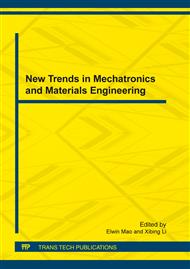p.570
p.576
p.583
p.587
p.592
p.597
p.602
p.607
p.612
An Appraisal System for Bilateral Vehicle Accident
Abstract:
There are hundreds of accidents every day recorded by government due to the human factor and environmental factor in Taiwan. The accident usually involved the money dispute; therefore the accident appraisal must indicate the bilateral parties’ blame clearly: all blame; major blame; minor blame and none blame. Although the local police can give a preliminary analysis report at first, the report cannot be official evidence. If the people need a credible appraisal report, they have to apply for the Taiwan Provincial Government Traffic Accident Investigation Committee’s accident appraisal report. However, applying for Committee’s accident appraisal report will take long time. Therefore, this study employed radial basis function neural network to build an expert system for appraisal of bilateral vehicle accident. The database was built from 307 accident cases in Taiwan from the year of 2004 to 2010. According to Committee’s analysis, there are 30 appraisal basses including 6 environmental basses and 24 vehicle basses chosen to be the input of the expert system. The training data includes three types: 70 cases training; 140 cases training; 207 cases training. Validation stage was carried out by using 100 fixed cases and the correctness was recorded. In the first stage, correctness rate is 76% for training with 70 cases. In the second stage, correctness rate is increased to 81% for training with 140 cases. In the third stage, correctness rate is increased to 89% for training with 207 cases. The training and validation processes were completed in one second. Therefore, the expert system proposed in this work is demonstrated to be an efficient system for the accident appraisal.
Info:
Periodical:
Pages:
592-596
Citation:
Online since:
January 2012
Authors:
Price:
Сopyright:
© 2012 Trans Tech Publications Ltd. All Rights Reserved
Share:
Citation:


